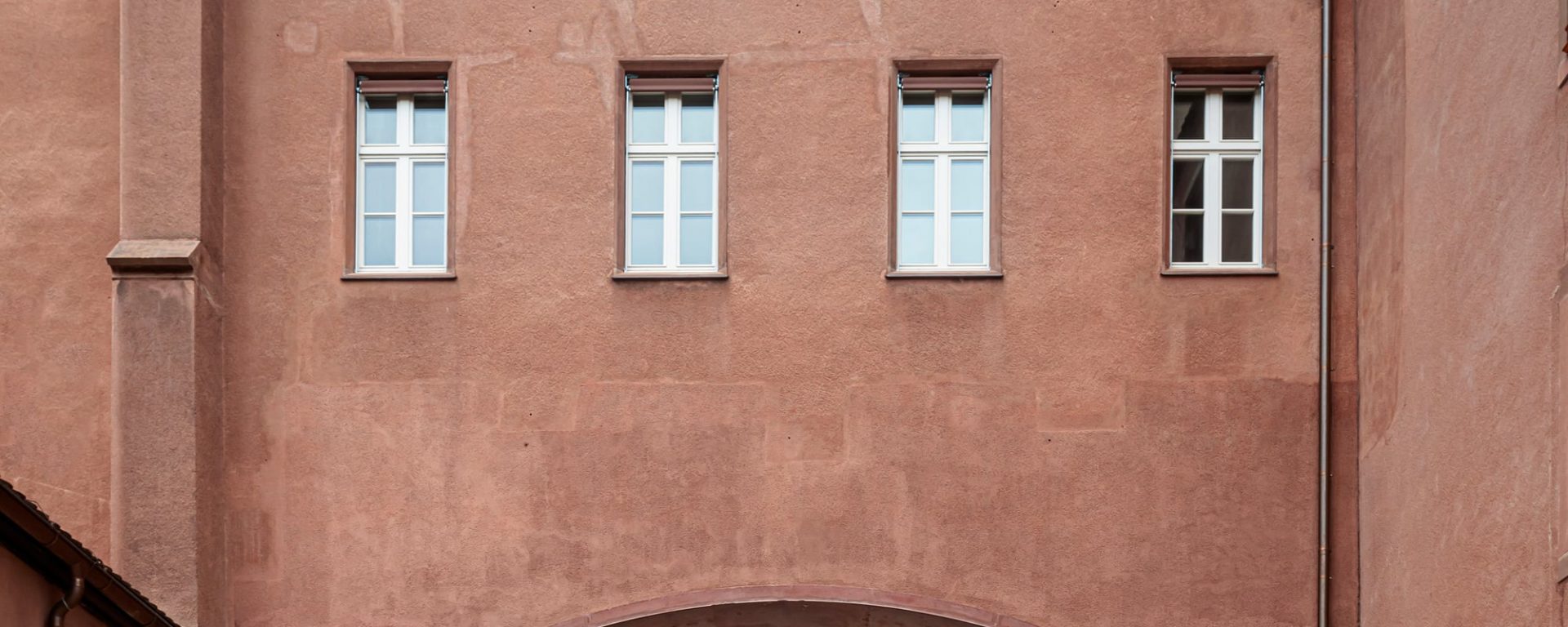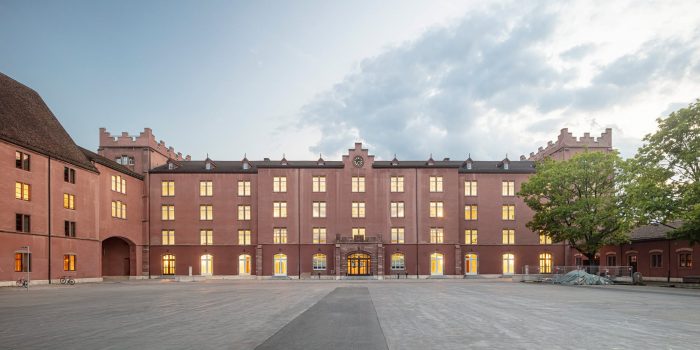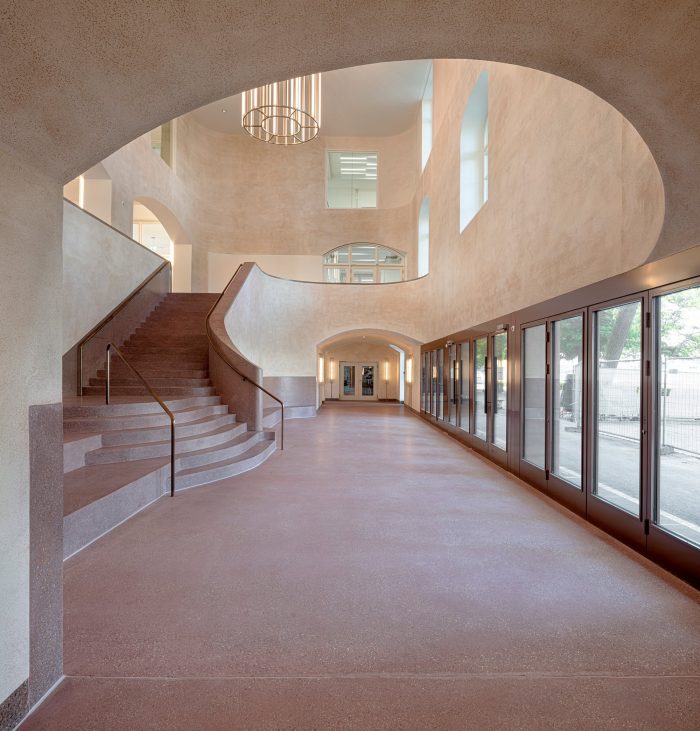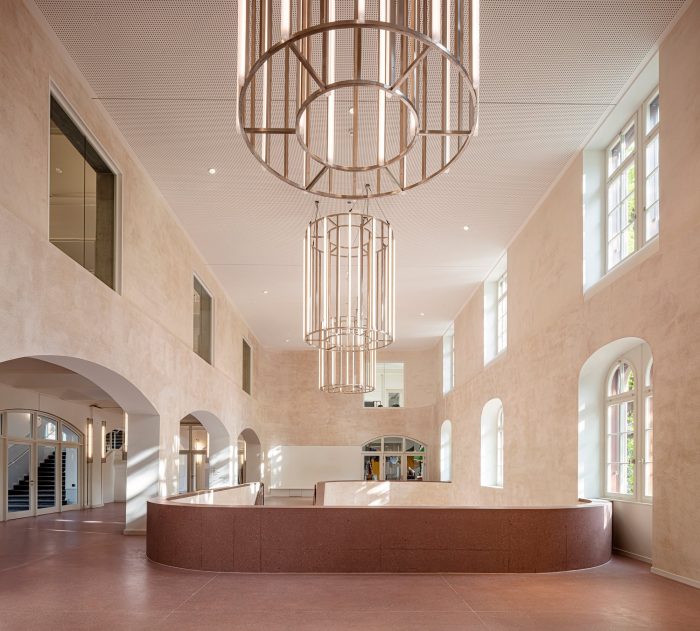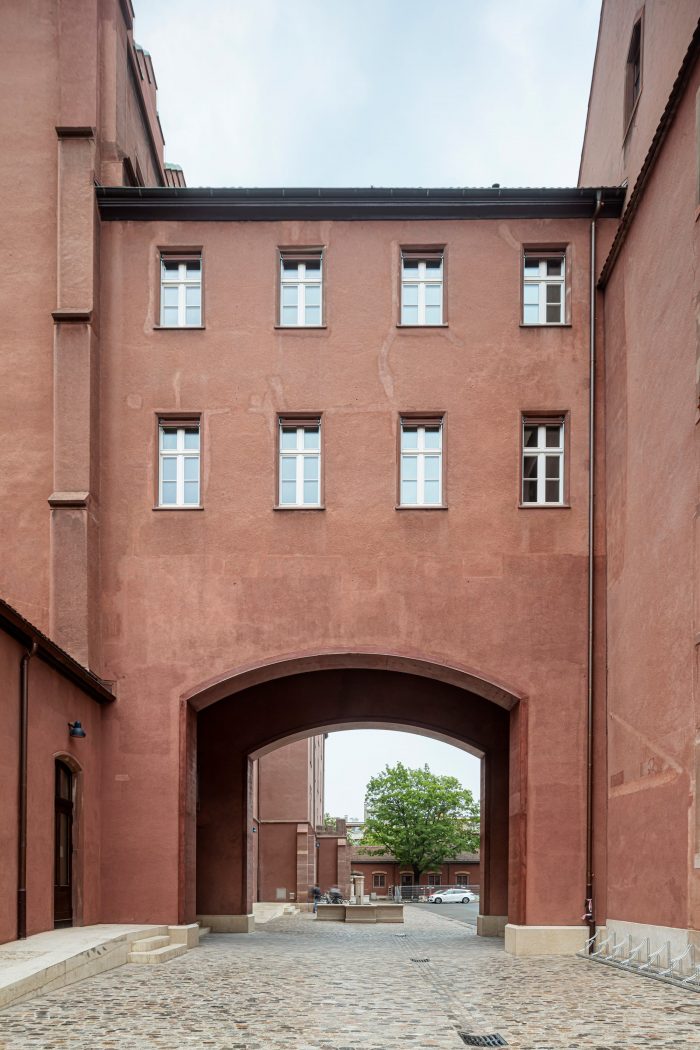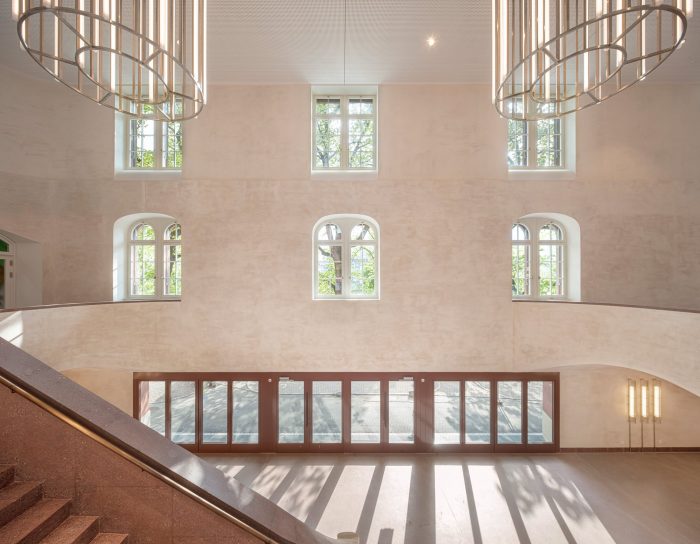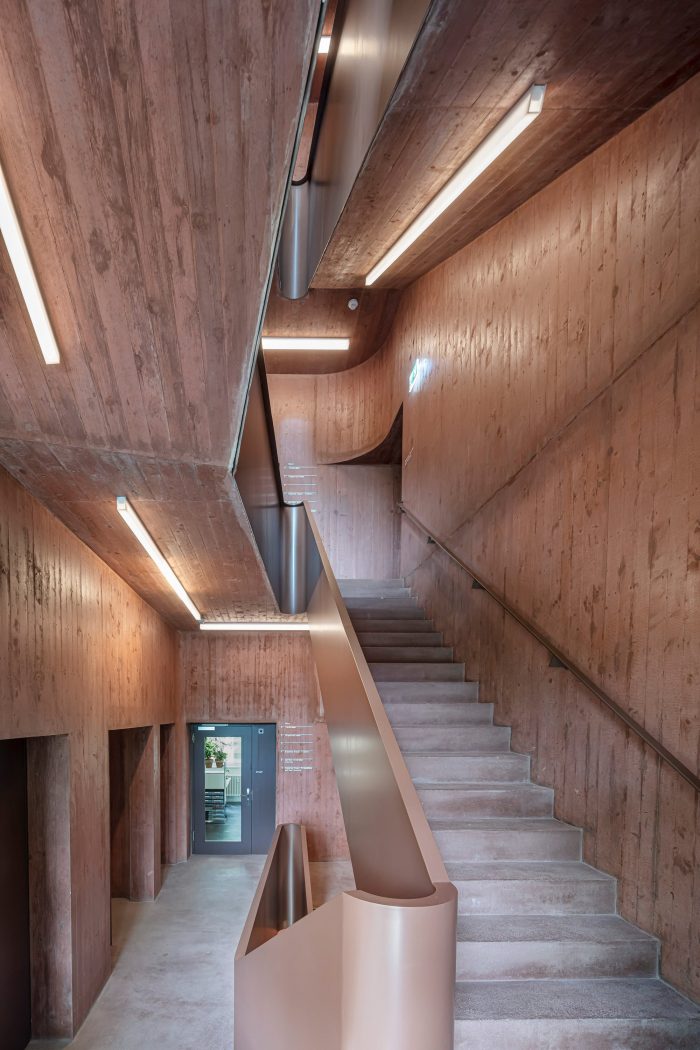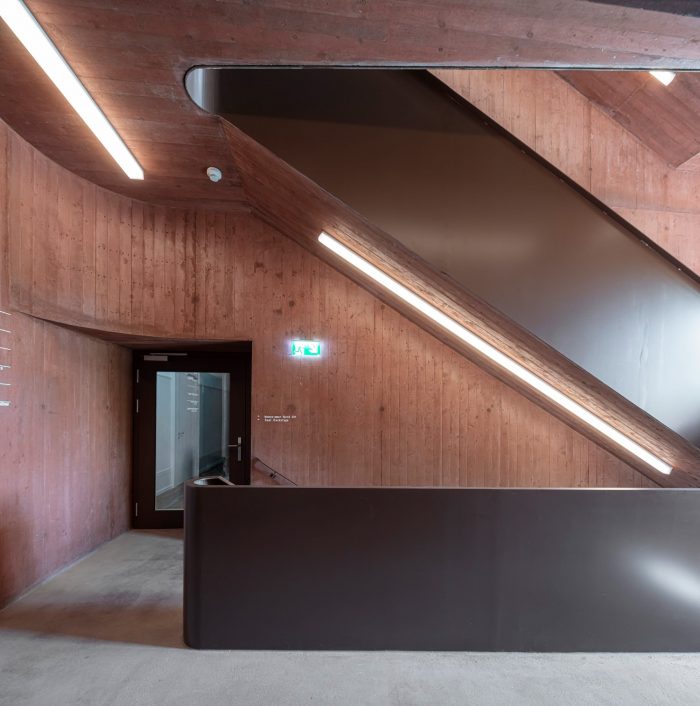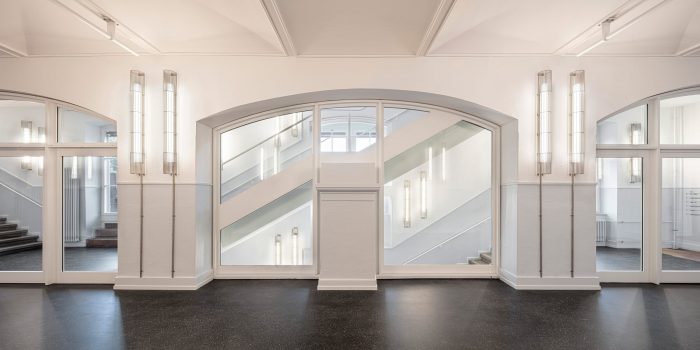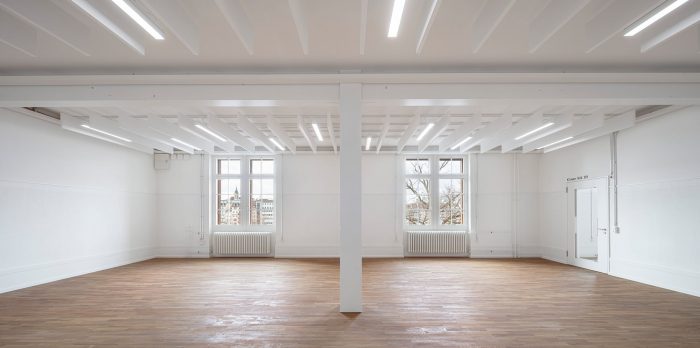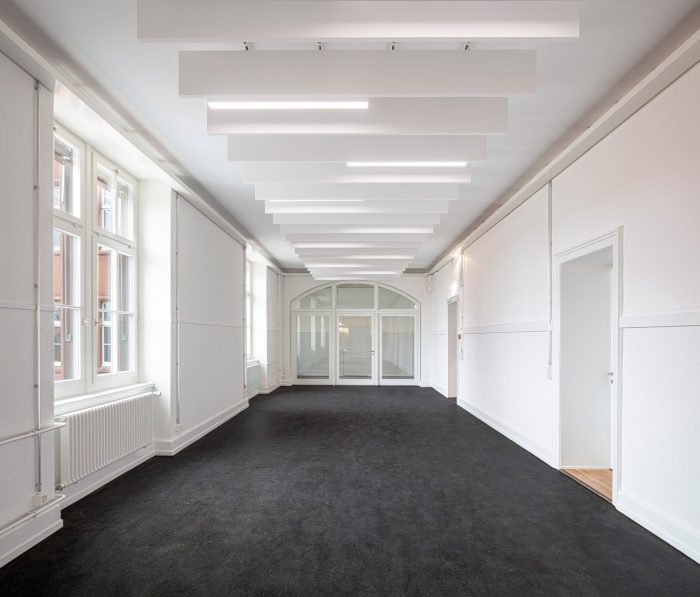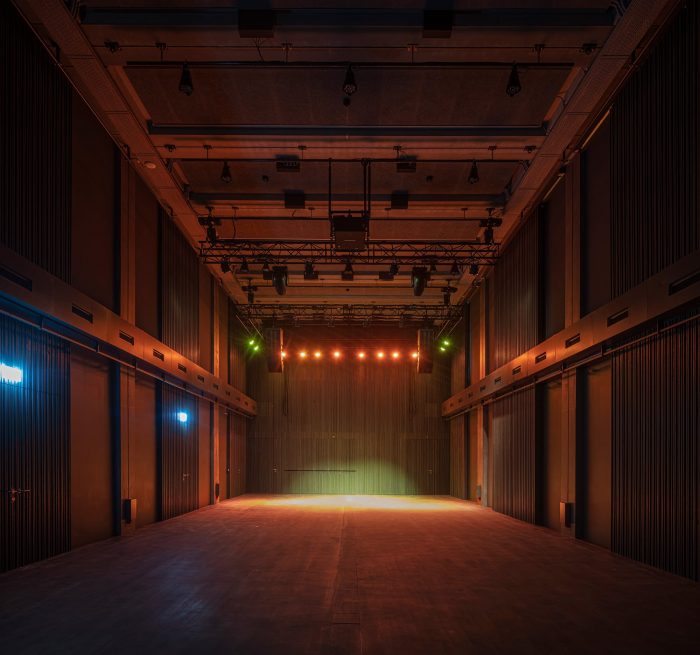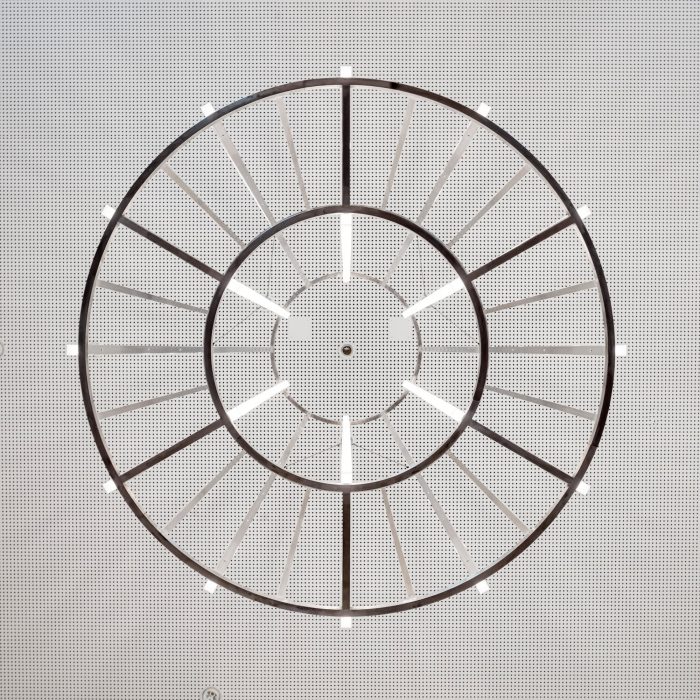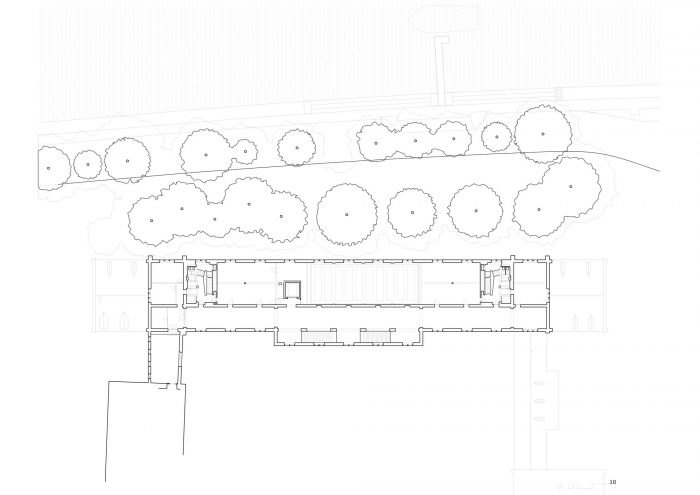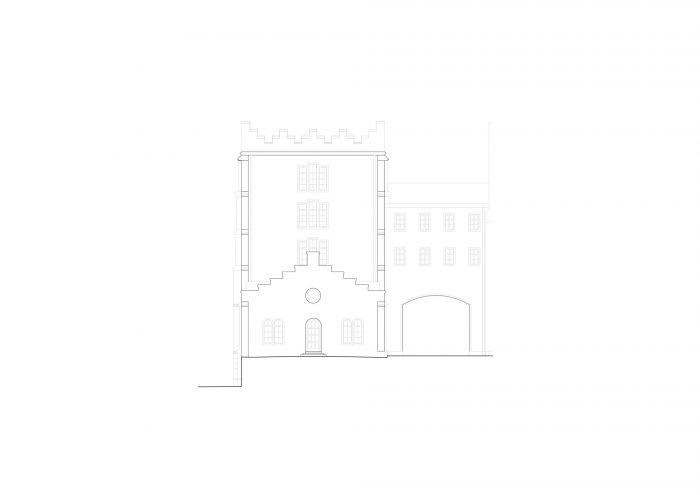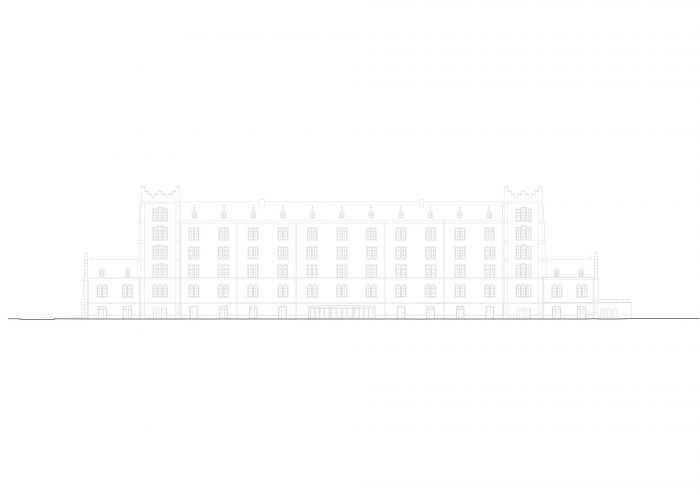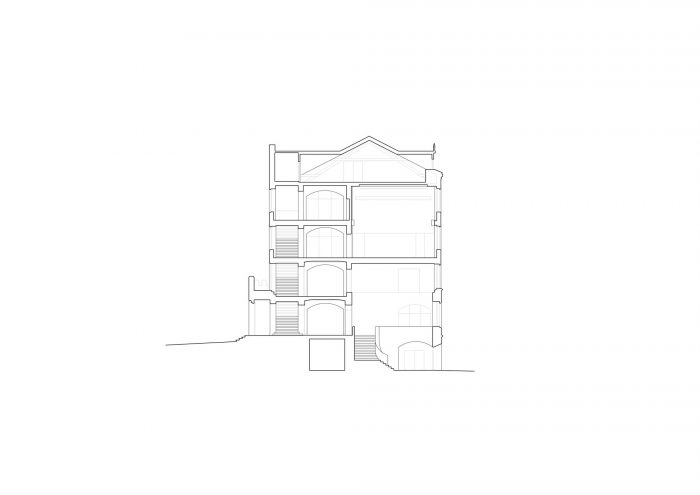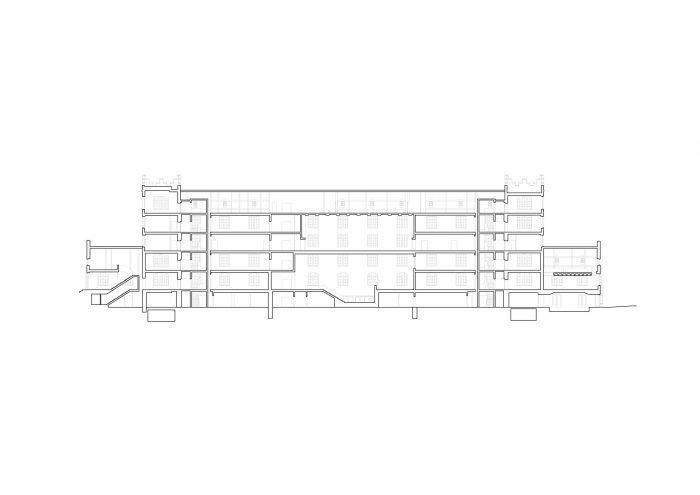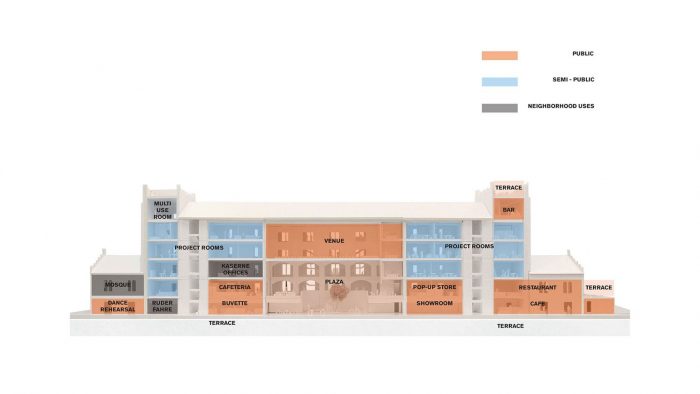将原有建筑改造成新的文化中心已成为循环建筑和再利用的典范:150年前作为军营建成,这座具有开创性的建筑刚刚成为巴塞尔市中心的新公共枢纽。2013年,Miquel del Rio和Hans Focketyn赢得了重新概念化现有巴塞尔军营主楼的国际竞赛,创造了一个文化灯塔,经过八年的改造过程,现在向公众、城市和未来开放。
The transformation of a pre-existing building into a new cultural center has become a model for circular architecture and re-use: built 150 years ago as a military barracks, this seminal building has just become a new public nexus in the heart of Basel. In 2013, Miquel del Rio and Hans Focketyn won the international competition to reconceptualize the existing Basel Barracks main building, creating a cultural beacon that, after an eight-year transformation process, is now open to the public, the city, and the future.
历史框架。150年前,瑞士军队在城市中央建造了一个军营综合体,形成了一个封闭的区域,将一般公众排除在外。因此,该地在1966年被废弃。在接下来的几十年里,其庞大的建筑和大片的开放区域被有机地嵌入巴塞尔,成为一个珍贵的社会和文化中心,被称为 “Kaserne地区”,因为 “Kaserne “是德语 “军营 “的意思。这种公民和社区的授粉过程使该地区成为文化、宗教和集体表达的热门地点。这里有几个文化设施、多功能的音乐和活动空间,以及几个餐馆和酒吧,都毗邻一个大型公共公园。然而,该建筑群中最突出的建筑从未经历过这种演变。它位于场地的最末端,阻挡了通往莱茵河的通道,尽管它是该建筑群的主要结构,但却绕过了这一社会转型。鉴于其在巴塞尔的中心位置,巴塞尔市在2013年发起了一个国际竞赛,以更新这栋9000平方米的建筑,现在被重新命名为kHaus。获奖设计由FOCKETYN DEL RIO STUDIO的Hans Focketyn和Miquel del Río提出。
Historical Framework. 150 years ago, the Swiss army built a military barracks complex in the middle of the city, forming an enclosed area that excluded the general public. The site was consequently abandoned in 1966. Over the following decades, its vast buildings and a large open area became organically embedded in Basel as a cherished social and cultural hub called “Kaserne area”, being “Kaserne” the German word for “barracks”. This civic and communal pollination process turned the area into a popular locale for cultural, religious, and collective expression. It hosts several cultural facilities, multifunctional music and event spaces, and several restaurants and bars, all adjacent to a large public park. However, the most prominent building of the complex never went through this evolution. Located at the far end of the site and blocking access to the river Rhein, it bypassed this social transformation, despite being the primary structure in the compound. Given its central location in Basel, the city launched an international competition in 2013 to renew the 9.000 m2 building, now rebranded as kHaus. The winning design was presented by Hans Focketyn and Miquel del Río of FOCKETYN DEL RIO STUDIO.
目前的外观。新的和更新的kHaus为巴塞尔市提供了一个现代和多功能的文化设施和新的公共区域,位于历史和中心位置。该项目将巴塞尔最具代表性的两个公共空间结合在一起:河流和Kaserne庭院,这两个地方现在首次联系在一起,并且两边都可以公开使用。这个新的城市中心促进了整个城市范围内的联系,为社区创造了一个新的聚会场所,由多种活动组成。
Current Exterior. The new and updated kHaus provides the city of Basel with a contemporary and multifunctional cultural facility and new public areas in a historic and central location. The conversion unites two of the most iconic public spaces in Basel: the river and the Kaserne courtyard, which are now linked for the first time and publicly accessible on both sides. This new urban hub facilitates connections on a city-wide scale, creating a new gathering place for the community, animated by multiple activities.
在庭院的南端,一个带有混凝土框架的古典拱门被雕刻出来,作为一个新的开口。与结构外围的另外两个通道一起,这些走廊全年为公众提供了通往河边的永久性通道。现在,在一天中的任何时候都可以通过各种路径穿越该建筑。
At the south end of the courtyard, a classical arch with a concrete frame was carved out to serve as a new opening. Along with two additional passages on the periphery of the structure, these corridors provide permanent public access to the river throughout the year. Now, the building can be traversed via various paths at any time of the day.
保留了建筑的原始构成和空间逻辑,FDRS将KHaus变成了一个开放和多孔的社会中心,供河边的许多活动使用。参照建筑和场地的历史,建筑师巧妙地重新配置了它的外观,同时保持了它的特性。它的外墙被轻轻地改变,将所有的底层窗户扩大为门,将建筑转化为一个开放和可访问的结构,充满了生命和许多不同语言的回声。
Retaining the building’s original composition and spatial logic, FDRS turned the kHaus into an open and porous social center for many activities at the riverfront. Referencing the building and the site’s history, the architects subtly reconfigured its exterior while keeping its character intact. Its facade was gently altered by enlarging all of the ground floor windows into doors, converting the building into an open and accessible structure, filled with life and the echoes of many different languages.
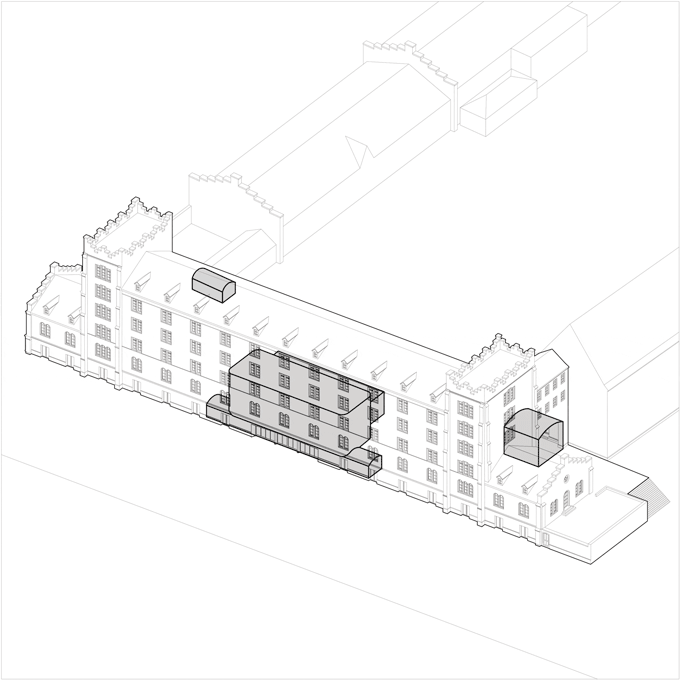
目前的内部。该建筑的核心是广场:一个广泛的室内公共空间,位于两个外墙、河流和庭院之间。它的高度超过13米,一年四季都可以举办活动。广场被认为是进入建筑的主要公共通道,是为每个人准备的:在潮湿的冬日或炎热的夏日午后,是一个可以去的地方。一个雕塑般的楼梯将庭院连接到河边。
Current Interior. The core of the building is the Plaza: an extensive, indoor public space that is located between the two facades, the river, and the courtyard. Over thirteen meters in height, it hosts activities year-round. Conceived as the primary public access to the building, the Plaza is intended for everyone: a place to go on wet winter days or hot summer afternoons. A sculptural stairway connects the courtyard down to the river.
kHaus的内部被定义为多元化和多功能性。它的中心是公共广场,正上方是一个活动和表演空间。遍布上面五层的是艺术和排练室、多功能厅、餐厅、用餐区和礼拜空间,所有这些都由中央广场和三个垂直楼梯连接。
The interior of the kHaus is defined by plurality and versatility: In its center is the public Plaza, and directly above is an events and performance space. Spread throughout the upper five floors are art and rehearsal studios, a matrix of multifunctional rooms, restaurants, dining areas, and spaces for worship, all linked by the central Plaza and three vertical stairways.
更广泛地说,KHaus及其程序的复杂性可以被理解为不同用途的组合,每个用途都有其特定的空间、材料和技术:都在一个屋檐下。面对这种差异,建筑师将不同的区域组合成一个有凝聚力的整体–每个区域都有自己的特点、颜色和声音,基于双重逻辑,即允许每个部分发展其独特的潜力,同时保持一个连贯的组合。
More generally, the kHaus and its programmatic complexity can be understood as an assemblage of disparate uses, each with its own particular translation into space, materials, and techniques: all under one roof. Confronted with this disparity, the architects combined different areas into a cohesive whole – each with its own character, colors, and sounds, based on the dual logic of allowing each part to develop its distinct potential while maintaining a coherent ensemble.
保留其结构元素并使其适应21世纪建筑的各种用途,建筑师谨慎地对Kaserne主楼进行了革新,使其具有功能性和灵活性,通过房间的 “多类型”,使其进一步适应并准备好迎接未来。房间可以变成走廊,走廊也可以变成房间,增加了内部的可扩展性和灵活性。开放式循环无处不在,并通过两个垂直楼梯进行引导。
Retaining its structural elements and adapting them to the various uses of a building for the twenty-first century, the architects discreetly revolutionized the Kaserne main building to allow for functionality and flexibility, making it further adaptable and ready for the future through the means of a “poly-typology” of rooms. Rooms can become corridors, and corridors can become rooms, increasing the interior’s scalability and flexibility. Open circulation becomes ubiquitous and is channeled through two vertical stairways.
未来的表现形式。一座曾经是障碍物的建筑现在已经开放,可以进入。这项耗资4500万瑞士法郎的改造工程是巴塞尔在Kleinbasel区对大型文化设施的首次公共资金投资。它现在是城市的一个9,000平方米的磁铁,也是城市包容性和多元文化取向的一个灯塔。新的Kaserne已经实现了它所要做的一切:它建立了新的联系,使两个外墙充满活力,将河流和庭院连接起来,并且由于建筑中的各种空间,它足够灵活,可以容纳多种用途。目前,它是一个文化中心,但谁也不知道它将成为什么。Kaserne地区在过去经历了一百种生活,其主要建筑在未来将继续轮回。
Future Manifestations. A building that used to be a barrier is now open and accessible. The 45 million Swiss Franc transformation is Basel’s first publicly funded investment in a large-scale cultural facility in the Kleinbasel district. It is now a 9.000 m2 magnet for the city and a beacon of its inclusive and multicultural orientation. The new Kaserne has achieved everything it set out to do: it forges new connections, animates both facades, links the river to the courtyard, and, thanks to the various spaces in the building, is flexible enough to accommodate many uses. For now, it is a cultural center, but who knows what it will become. The Kaserne area has lived a hundred lives in the past and its main building will continue to reincarnate in the future.
Architects: Focketyn Del Rio Studio
Area : 9394 m²
Year : 2022
Photographs :Adrià Goula
Site Supervision : Caretta Weidmann Baumanagement AG
Structural Engineering : Schnetzer Puskas Ingenieure AG
Building Energy Consultant : Ehrsam Beurret Partner AG
Heating : Ingenieurbüro Stefan Graf
Ventilation : Treuthardt Haustech
Electrical System : Hefti Hess Martignoni
Acoustics : Applied Acoustics GmbH
Design Team : Letizia Fürer, Anna Kuhli, Alastair Lock, Aljoscha Lanz, Angela Brasanac, Christina Fernandez, Dalila Godbahne, Carolina Osorio, Francessco Maria di Giusepp, Hajdin, Draguscha, Iris Carratala, Jaime Pesio Suso, Jonathan Bürgel, Felipe Bermudez Murillo, Joshua Thomson, Juan Pablo Gallego, Juan Pablo Pineda Vergara, Manuela Navarro, Marco Bamberger, Marco Lenherr, Marion Cruz, Pierre Marmy, Raphael Rattier, Santiago Martinez, Tomas Eduardo Echeverri, Montoya, Tomas Guerra, Vida Amani, Xavier Uriach, Xenia Heid.
General Planning : Arge Kaserne Hauptbau, Arge Kaserne Hauptbau
Fire Consultant : af-brandschutz
Plumbing : Unico Gebäudetechnik AG, Suiselectra Ingenieurunternehmen AG
Stage Design : Ducks Scéno, Ducks Scéno, Wibbeke & Penders GmbH
City : Basel
Country : Switzerland

